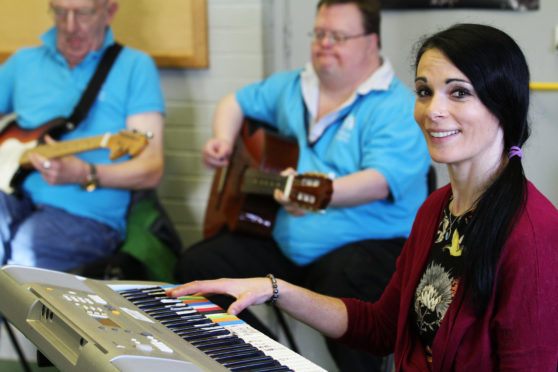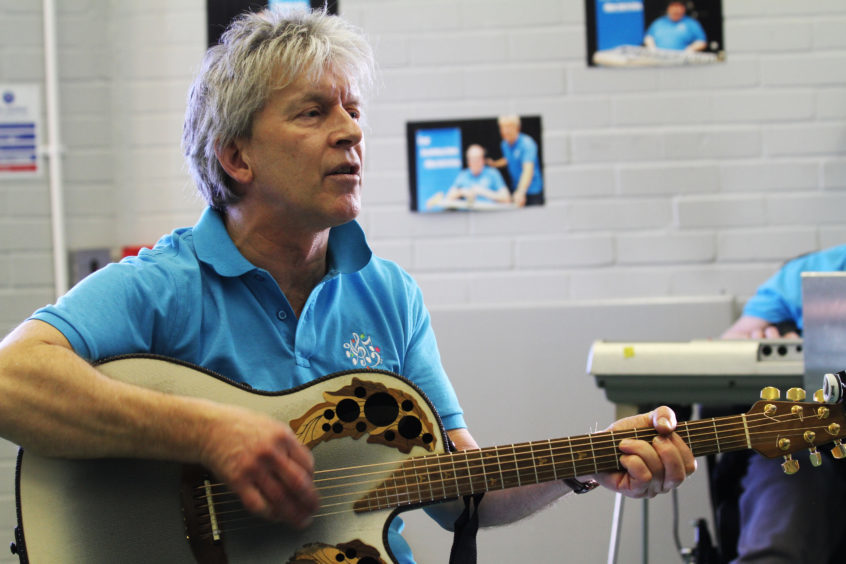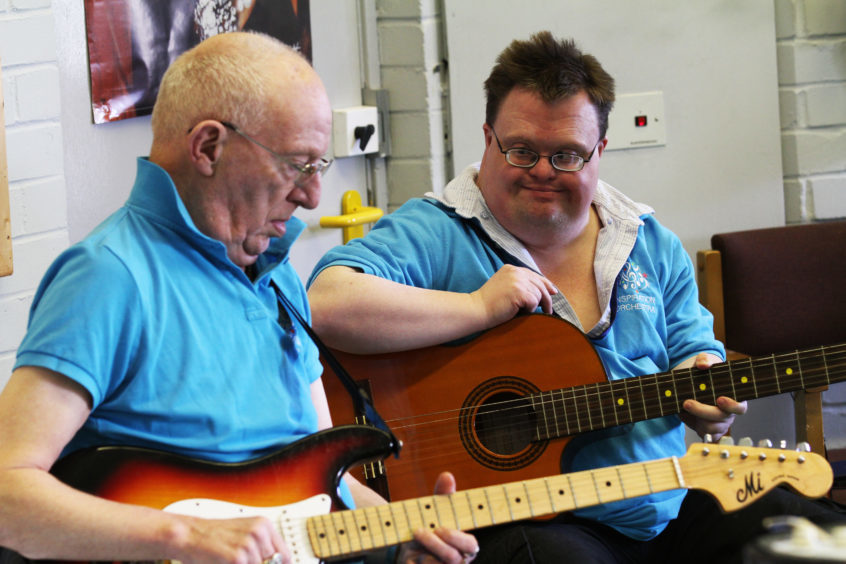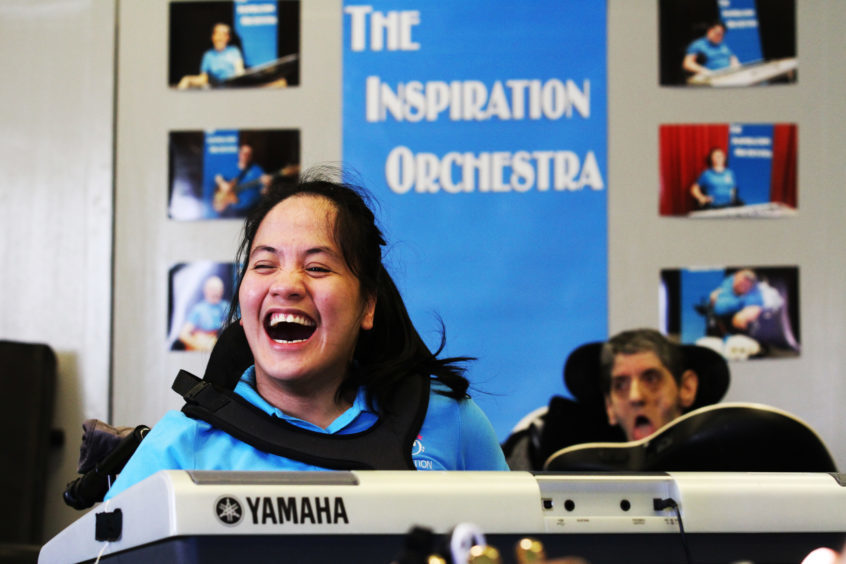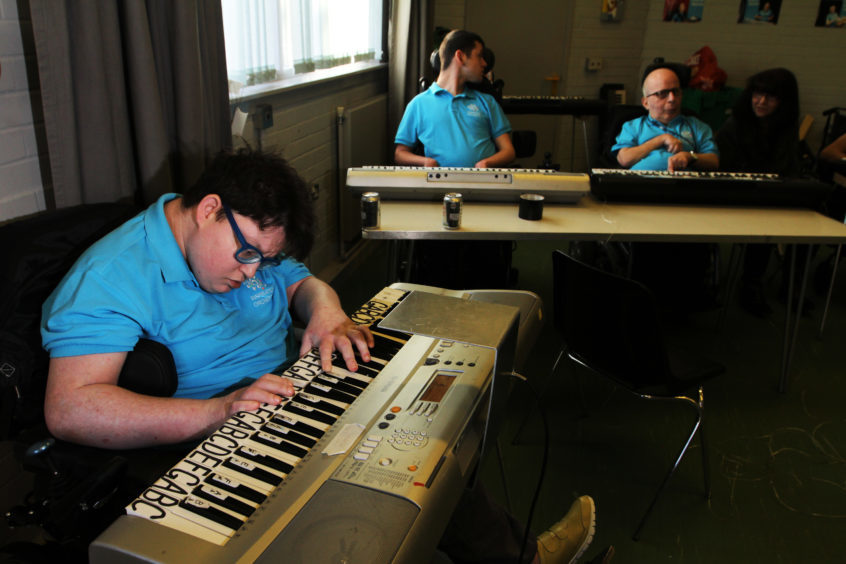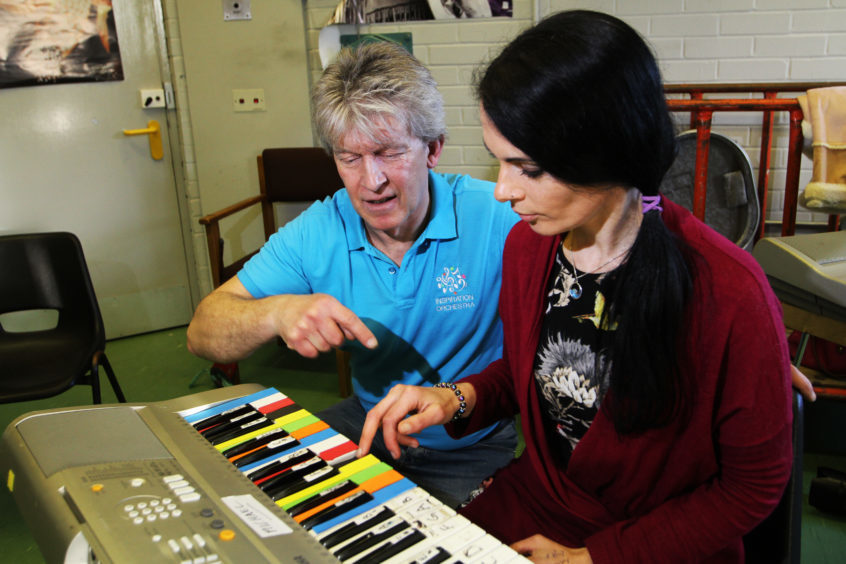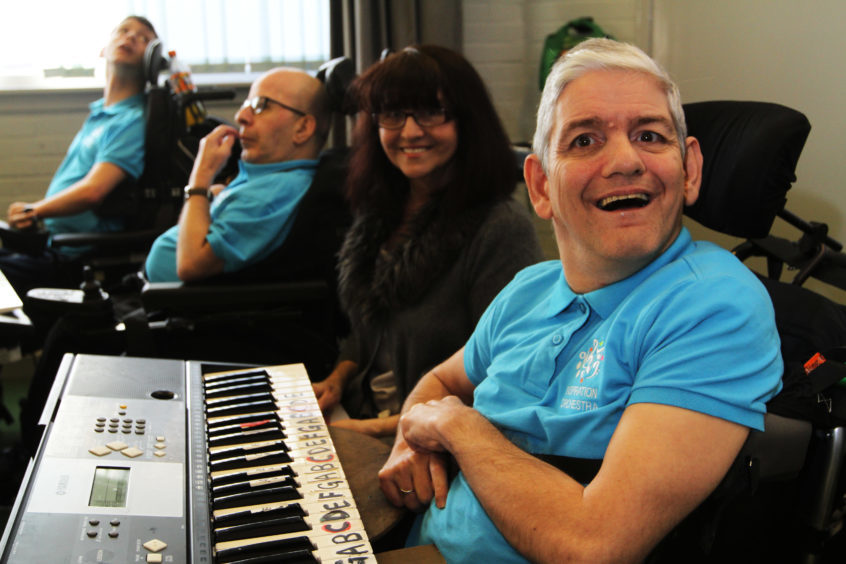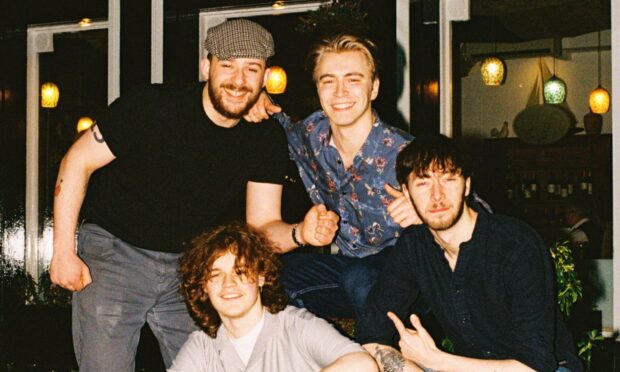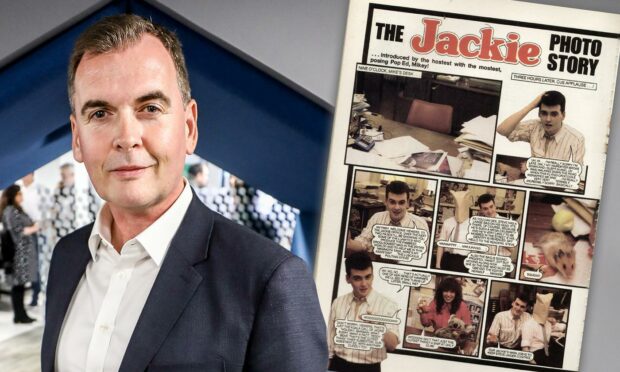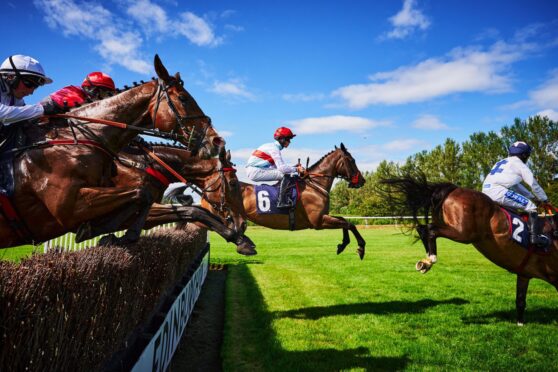The Inspiration Orchestra is a project aimed at enabling disabled people to play beautiful music, as Gayle finds out
Techno, hip-hop, classical, death metal, rock n’roll or smooth jazz – the genre doesn’t really matter.
What does matter is that everyone, no matter what colour, creed or culture, can be soothed, energised, moved and healed by music.
In Perth, the power of music is being celebrated through the Inspiration Orchestra.
Led by singer/songwriter Ian White, the project sees him teach music to severely disabled adults via the charity Home Visit and then offers them the chance to perform concerts.
“I hadn’t had much experience of being around people with profound disabilities and saw myself as being separate from them and unconnected,” says Ian, when I meet him for a group rehearsal.
“However, this false and rather naive perception has changed and I now realise that every one of us can make a positive and meaningful contribution regardless of skill or ability.”
Today, a group of 19 people with a range of disabilities, including brain damage, spina bifida, Down’s Syndrome and various genetic conditions, are taking part.
The orchestra’s “mascot”, Bichon Frise Tilly, curls up on a lap while guitar strings are tweaked and keyboards tapped.
So, how does it work? It’s about breaking it down into basic components, explains Ian.
“Most of my players can use one finger on each hand, as a minimum starting point,” he says.
“They use electronic keyboards and I construct special stands customised for each player.
“If they can read but need help with note identification, I write on the note names in large letters.
“If they can’t read, I go for colour identification. One pupil, although very limited in hand control, is a great learner and has successfully memorised all the note positions with no assistance from letters or colours.”
With careful choice of songs, Ian can pick pieces which have constant notes running through them, or that require minimal changes.
Ed Sheeran’s Perfect, for example, has quite a complicated melody line, but it’s possible for a keyboard player to hold one single note that works through the whole song.
“For songs that need one simple note change, I use a light system with a foot switch,” says Ian.
“I press the switch and a light comes on in front of the player and they know to change note.”
Ian also modifies guitars so they are a single string operation. This means players with very limited use of one finger can simply reach out and pluck the string.
For pupils with no arm or hand control, he’s devised a computer system where notes are activated by eye movement.
“My goal is to enable anyone who wants to participate in music to get involved,” says Ian.
“Although I’ve had years of touring and recording with professional musicians, this project is the most rewarding thing I’ve ever done.”
Sarah Chapman, 32, who has cerebral palsy and is partially blind, tells me she started off playing one note on the keyboard but can now can play chords.
“Being part of the orchestra makes me so happy,” she adds.
Sitting down at a keyboard, I follow Ian’s instructions and I play my part in the Inspiration Orchestra. What an honour that is.
The sound we make is not, as some might imagine, a jarring cacophony, but is in fact beautiful music.
We fire through 11 songs, with the rousing finale being Dancing in the Street.
Throughout the session, everyone beams from ear-to-ear – rarely have I witnessed such unadulterated joy in one room!
The biggest grins come from Jemmelyn, who plays an uplifting keyboard solo mid-song. And Brian Lynch is ecstatic, belting out the lyrics, when we play his favourite Westlife song.
It’s clear that Ian is working wonders for disabled people, but he is modest about his success.
“Able-bodied people wanting to join an orchestra have to receive individual tuition, practice as a group, then overcome the nerves of playing in public,” he says.
“All I’ve done is try to duplicate that in the disabled community.”
Margaret Benson, whose disabled son David is on keyboards, helps Ian on a regular basis.
“The orchestra has been life changing for David – the smile on his face says it all,” she says.
“Each person plays a small part but when they come together, it’s symphonic. It’s a huge boost to their confidence and gives them a sense of purpose and self-worth.”
info
The Inspiration Orchestra’s next concert is at St Matthew’s Church, Tay St, Perth, on April 20 at 7.30pm.
Ian’s dream is to get more people involved and to break down barriers and prejudices about disabled people.
The group has just got funding for a sound engineering graduate who will work with them part-time.
Their work revolves around weekly individual music lessons, weekly orchestra practices and monthly public concerts. All lessons are free of charge and funded by the charity, Home Visit.
For more details, see theinspirationorchestra.com
